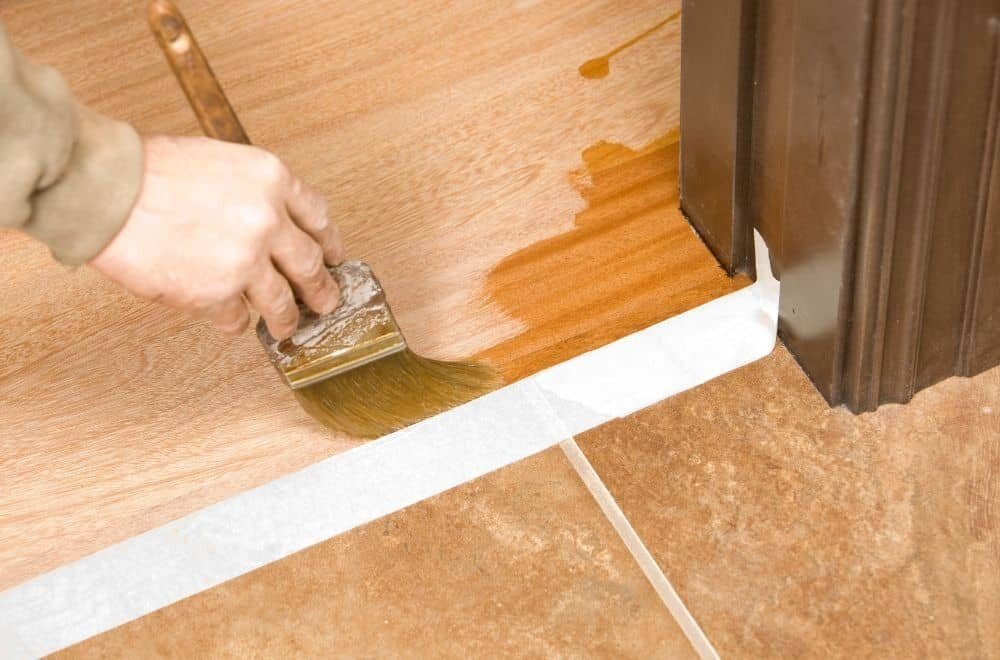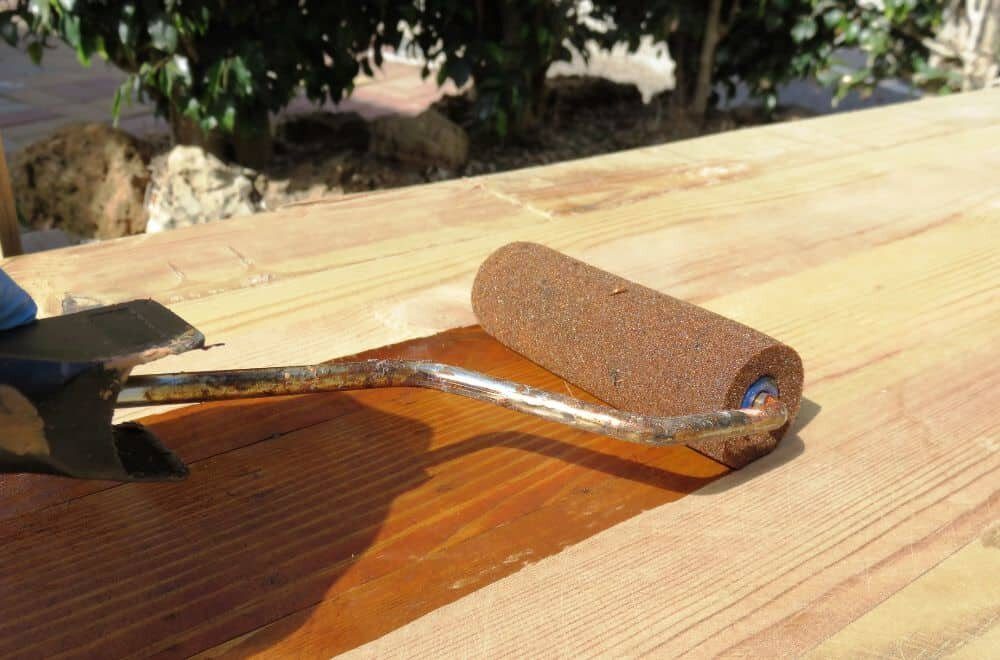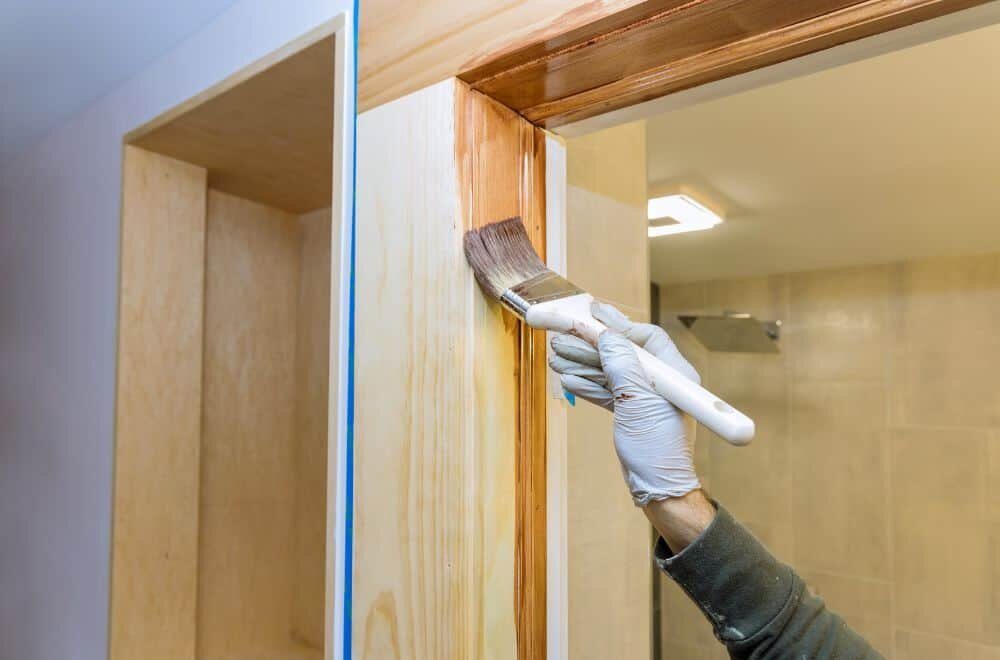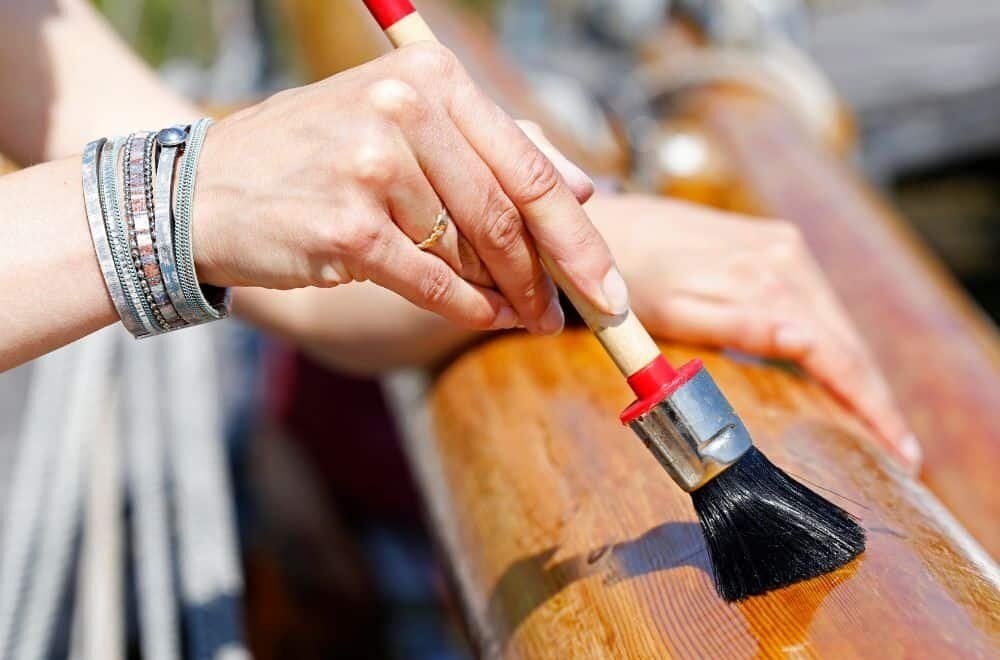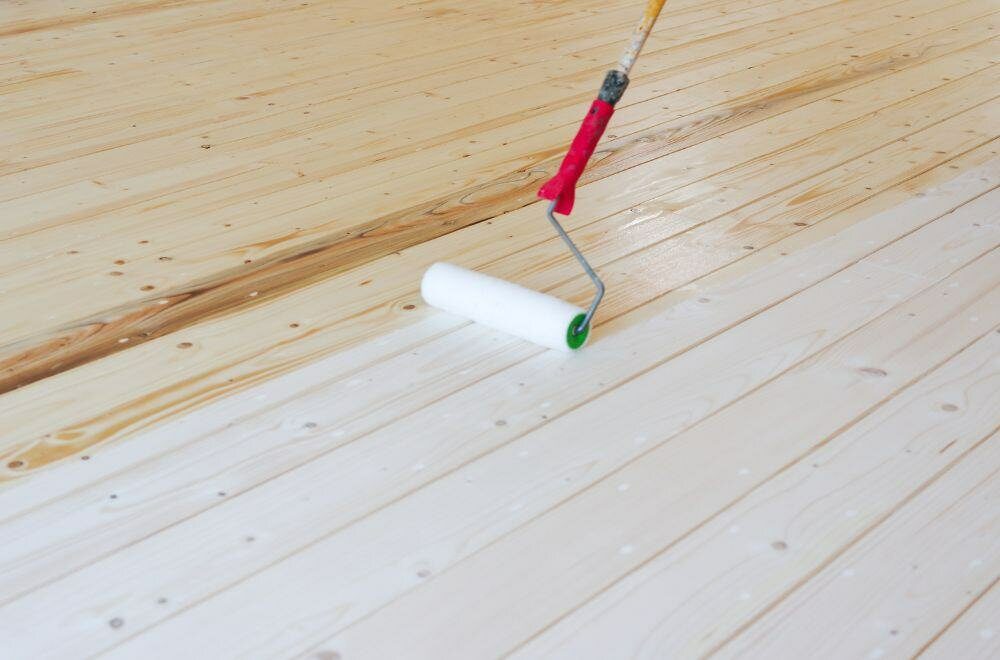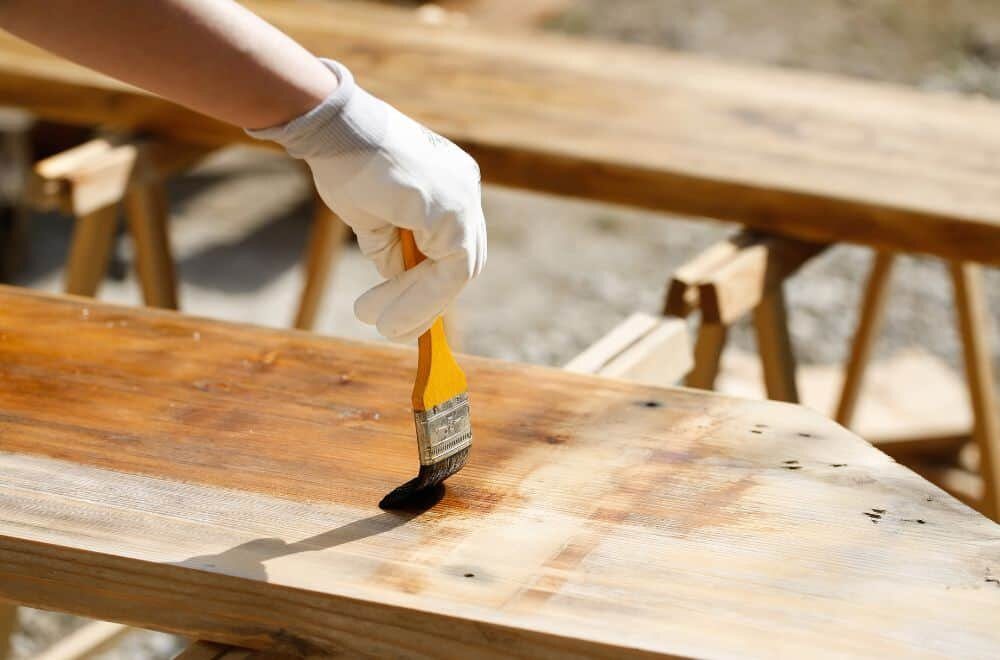Can a water-based polyurethane go over an oil-based wood stain? This is a common question that many DIY enthusiasts and professional woodworkers ask themselves. The answer is yes, you can use a water-based polyurethane over an oil-based wood stain, but there are some important considerations to keep in mind.
Firstly, it’s important to ensure that the oil-based wood stain is fully cured before applying the water-based polyurethane. This can take anywhere from a few days to a few weeks depending on the type of stain and the conditions it’s exposed to. Applying the water-based polyurethane too soon can cause it to not adhere properly and ruin the finish. Additionally, it’s important to make sure that the surface is clean and free of any dust or debris before applying the polyurethane.
Understanding Polyurethane Types
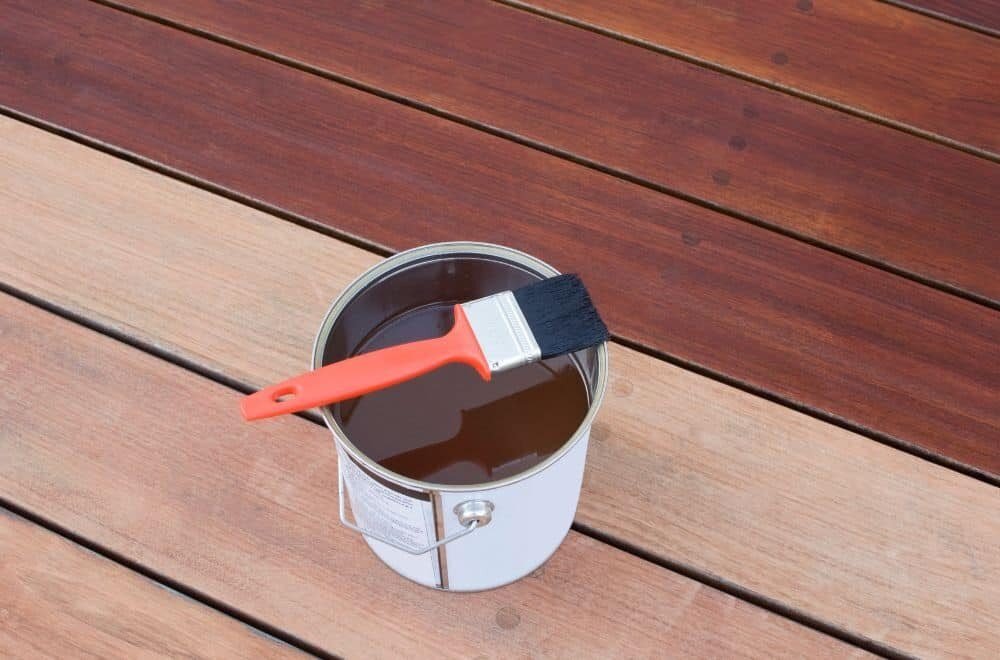
When it comes to finishing wood, polyurethane is a popular choice due to its durability and versatility. However, there are two main types of polyurethane: water-based and oil-based. Each has its own unique properties that make it suitable for different applications.
Water-Based Polyurethane
Water-based polyurethane is a popular choice for those who want a clear finish that won’t yellow over time. It has a low odor and dries quickly, making it ideal for use in areas with poor ventilation. Additionally, water-based polyurethane is easy to clean up with soap and water.
One of the main advantages of water-based polyurethane is that it is less likely to crack or peel over time. It also has a lower VOC content than oil-based polyurethane, making it a more environmentally friendly option. However, water-based polyurethane may not be as durable as its oil-based counterpart.
Oil-Based Polyurethane
Oil-based polyurethane is a popular choice for those who want a durable finish that will stand up to heavy use. It has a high VOC content, which means it can be harmful to the environment and your health if not used in a well-ventilated area. Additionally, oil-based polyurethane takes longer to dry than water-based polyurethane.
One of the main advantages of oil-based polyurethane is that it provides a warm, amber glow that can enhance the natural beauty of the wood. It is also more durable than water-based polyurethane, making it ideal for high-traffic areas. However, oil-based polyurethane may yellow over time, which can detract from the natural beauty of the wood.
In summary, both water-based and oil-based polyurethane have their own unique properties that make them suitable for different applications. Water-based polyurethane is a good choice for those who want a clear finish that won’t yellow over time, while oil-based polyurethane is ideal for those who want a durable finish that will stand up to heavy use.
The Science Behind Polyurethane and Wood Stain Interaction
When it comes to finishing your wooden projects, you may have a lot of questions about the compatibility of different products. One common question is whether you can apply a water-based polyurethane over an oil-based wood stain. The answer is yes, but there are some important things to keep in mind.
First, let’s talk about the science behind polyurethane and wood stain interaction. Polyurethane is a protective coating that is applied over wood to protect it from damage and wear. It is made up of urethane resins, which are suspended in a carrier medium. The carrier medium can be either oil-based or water-based.
Wood stain, on the other hand, is a type of finish that is applied to wood to enhance its natural color and grain pattern. Stains are made up of pigments, dyes, and solvents, and they can be either oil-based or water-based.
When you apply a water-based polyurethane over an oil-based wood stain, the polyurethane will bond to the stain, but it may not adhere well to the wood surface underneath. This can lead to peeling and flaking of the finish over time.
To avoid this problem, it is important to make sure that the wood surface is clean and free of any contaminants before applying the polyurethane. You should also allow the stain to dry completely before applying the polyurethane. This will ensure that the polyurethane adheres well to both the stain and the wood surface.
In summary, you can apply a water-based polyurethane over an oil-based wood stain, but you need to take some precautions to ensure that the finish adheres well and lasts for a long time. By following these guidelines, you can achieve a beautiful and durable finish on your wooden projects.
Process of Applying Water-Based Polyurethane Over Oil-Based Stain

If you are looking to apply a water-based polyurethane over an oil-based stain, it is important to follow the correct process. Here are the steps to ensure a successful application:
Surface Preparation
Before applying the water-based polyurethane, the surface must be properly prepared. This includes removing any dust, dirt, or debris from the surface. Wipe the surface with a cloth dipped in a mixture of water and detergent to remove any grease, wax, dust, and dirt that may be on the surface. As this step and the step before will be the primary factors for determining how well your polyurethane finish will hold, we highly recommend being thorough.
After cleaning the surface, it is important to roughen it by sanding it. This will help the polyurethane adhere to the surface better. Use a fine-grit sandpaper to sand the entire surface. Wipe the surface clean with a cloth to remove any dust or debris.
Application Technique
When applying the water-based polyurethane, it is important to use the correct technique. Start by stirring the polyurethane gently but thoroughly before each use. Apply the finish in a clean, well-ventilated area.
Use a high-quality brush or roller to apply the polyurethane. Apply a thin, even coat of polyurethane to the entire surface. Avoid over-brushing or over-rolling, as this can cause bubbles and streaks in the finish.
Drying Time
Allow the first coat of polyurethane to dry completely before applying a second coat. This can take anywhere from 2-4 hours, depending on the humidity and temperature of the room.
After applying the final coat, allow the surface to dry completely before using it. This can take up to 24 hours, depending on the humidity and temperature of the room.
Following these steps will help ensure a successful application of water-based polyurethane over an oil-based stain.
Potential Problems and Solutions
Uneven Finish
One potential problem when applying a water-based polyurethane over an oil-based stain is an uneven finish. This can occur when the polyurethane does not adhere properly to the stain, causing it to bubble or peel. To avoid this issue, it is important to properly prepare the surface before applying the polyurethane.
One solution is to lightly sand the surface with fine-grit sandpaper to create a rough surface for the polyurethane to adhere to. Additionally, you can apply a coat of dewaxed shellac as a barrier between the stain and polyurethane. This will help the polyurethane adhere better to the surface and prevent any potential issues with an uneven finish.
Peeling Issues
Another potential problem when applying a water-based polyurethane over an oil-based stain is peeling. This can occur when the polyurethane does not properly bond with the stain, causing it to peel off in layers. To avoid this issue, it is important to properly clean and prepare the surface before applying the polyurethane.
One solution is to clean the surface with a degreaser and allow it to completely dry before applying the polyurethane. Additionally, you can use a bonding primer to help the polyurethane adhere better to the surface. This will help prevent any potential issues with peeling and ensure a durable finish.
Overall, while there can be potential problems when applying a water-based polyurethane over an oil-based stain, these issues can be easily avoided with proper preparation and application techniques.
Maintenance and Longevity of the Finish
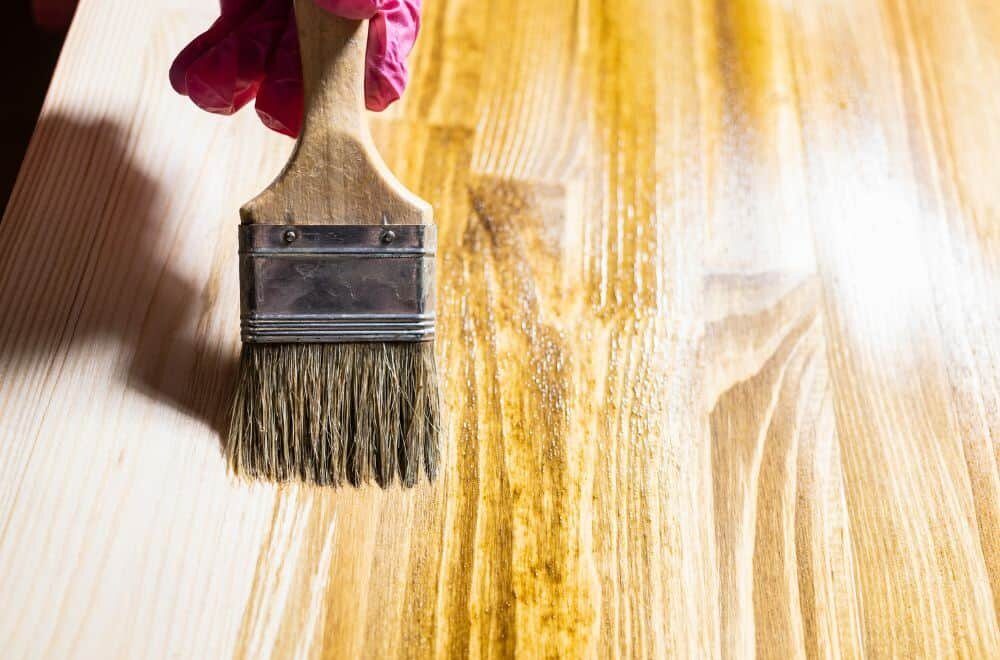
When it comes to maintaining the finish of your wood stain, there are a few things you can do to ensure its longevity. Here are some tips to keep in mind:
- Regular cleaning: Keep your floors or furniture clean by regularly sweeping or dusting them. Use a damp cloth or mop to wipe away any spills or stains as soon as possible. Avoid using harsh chemicals or abrasive cleaners, as they can damage the finish.
- Avoid heavy traffic: Try to avoid heavy foot traffic or moving heavy furniture over your stained wood floors, as this can cause scratches or dents in the finish.
- Refinishing: If you notice that the finish is starting to wear down, you may need to refinish your floors or furniture. This involves sanding down the old finish and applying a new coat of stain and polyurethane.
In terms of longevity, water-based polyurethane typically has a shorter lifespan than oil-based polyurethane. Water-based finishes are more prone to wear and tear, and may need to be refinished more frequently. However, this can vary depending on factors like the type of wood, the amount of foot traffic, and the quality of the finish.
Ultimately, the key to maintaining the longevity of your finish is to take good care of your wood stain and avoid harsh chemicals or heavy traffic. With proper care, your wood stain can last for years to come.
Frequently Asked Questions
Can water-based polyurethane be applied over an oil-based wood stain?
Yes, water-based polyurethane can be applied over an oil-based wood stain as long as the stain is completely dry. If the stain is not dry, the polyurethane can rub off or cause damage to the stain. To avoid this, make sure the stain has completely dried before applying the polyurethane.
What is the difference between water-based and oil-based polyurethane?
Water-based polyurethane dries faster than oil-based polyurethane and has a lower odor. Oil-based polyurethane takes longer to dry, has a stronger odor, and can yellow over time. Water-based polyurethane is also easier to clean up with soap and water, while oil-based polyurethane requires solvents for cleanup.
Can you put Polycrylic over oil-based stain?
Yes, Polycrylic can be applied over oil-based stain as long as the stain is completely dry. Polycrylic is a water-based product and can be used as a substitute for water-based polyurethane.
How long should oil-based stain dry before applying water-based polyurethane?
Oil-based stain should dry for at least 24 hours before applying water-based polyurethane. However, it’s recommended to wait 48 hours to ensure the stain is completely dry and ready for the polyurethane.
What are the disadvantages of using water-based polyurethane?
Water-based polyurethane can be more expensive than oil-based polyurethane and may require more coats for the desired finish. It can also raise the grain of the wood, requiring additional sanding between coats.
How many coats of water-based polyurethane should be applied on stained wood?
A minimum of three coats of water-based polyurethane should be applied on stained wood, with four to five coats being optimal in most scenarios. A single coat of water-based polyurethane is very thin, and creating a layer that is thick enough requires at least three coats.
